Mary Barnes exhibition at Nunnery Gallery
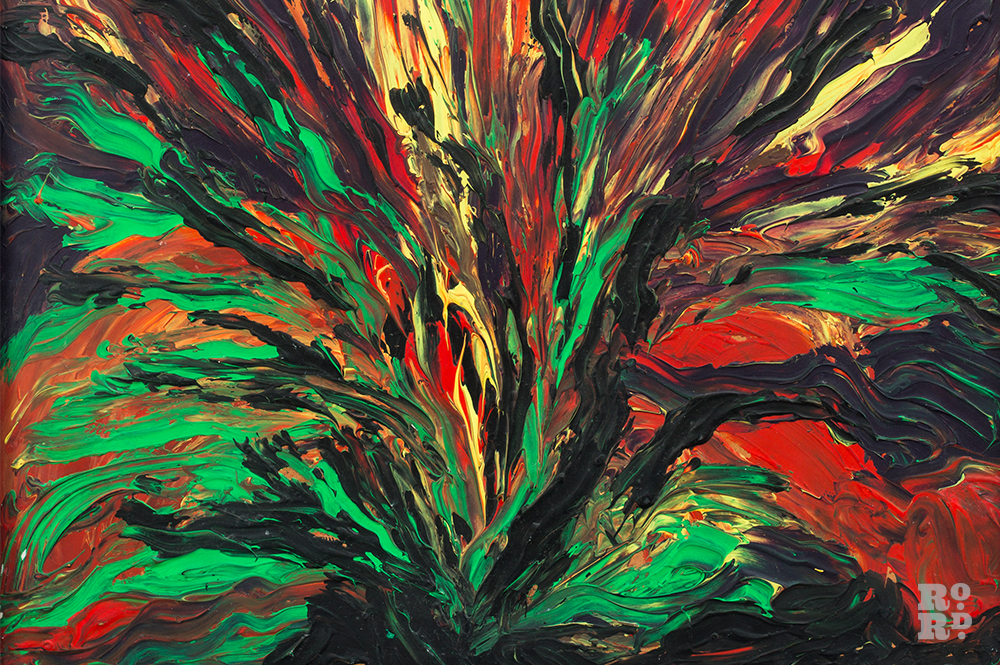
Mary Barnes’ time at Kingsley hall was vital in her transformation from Nurse to Creative, letting her evolve in to the artist, spiritualist, author, poet and campaigner that she was when she died. The beginning of Mary Barnes’ career as an artist came to be during her time at Kingsley hall as indeed she herself said of her work ‘My paintings are an important part of my life, which lay buried for 42 years’ – the age at which she entered the life and work of Dr RD Laing, and her ‘admission’ in to Kingsley hall in 1965.
Mary Barnes and RD Laing
RD Laing set up Kingsley hall with the view of changing the treatment of psychosis, and the variety of illnesses it was associated with such as acute depression and schizophrenia, which Mary herself suffered from. He was of the opinion that mental illness was a normal, functioning element of the world we live in, and that it was in fact a ‘perfectly rational response to an insane world’, and must therefore be treated as such. Kingsley hall gave its residents an opportunity to live and be treated with the same freedom and respect any other individual would receive, and indeed that they would not have received in any medical establishment prior to this.
It was in this environment that Mary Barnes began to explore outlets of emotion that had not ever been offered to her – in particular the exploration of her past through ‘regressive therapy’. She began to act as she would have as an infant; living without clothes, crying for attention, and being fed with a bottle. It was here that her first ‘paintings’ came to be as she smeared her own faeces over the walls, painting with her hands in a manner that would become synonymous with her future style.
Kingsley Hall in the 1960s
Kingsley hall was located in the heart of east London, placing the patients in the middle of a residential community of the 1960s, and unsurprisingly placing them in to a society that did not understand the alternative methods that Laing was exploring. One resident – Pamela Lee – described the attitude towards the patients as being particularly hostile; she said they ‘were so isolated from the people around us, because if they saw us they would just ignore us. They really didn’t like us at all’.
It was perhaps because of this that they formed such a close community with each other; helping with every aspect of living in a family-style household, whilst at the same time experimenting with new therapies and mind altering substances such as LSD which was still legal at the time. This liberation of being able to express themselves in such ways was what made Kingsley hall such a good environment for the residences, but what alienated them from their neighbors.
Kingsley hall closed in 1970, but this was not to be the end Barnes’ explorations in to creativity; it was in this period that she flourished into a renowned figure both in creative and psychiatric spheres. Her work was exhibited in countries around the world, but she never let the story of where they came from be passed by. She travelled with her work and delivered talks on mental heath creating a close relationship between the physical pieces, and the histories they represented.
Mary Barnes and Catholicism
Having converted to Roman Catholicism in her youth, religious imagery was often the subject matter of her paintings, depicted in powerful bright colours. It was one of these that for a period of time adorned the wall of the dining room at Kingsley Hall; a painting of the three stages of sacrifice, in which she notes the colours ‘purple of passion, followed by green, for growth’, perhaps emotions and actions that she used to remind herself of where she must direct her thoughts, and that she could compare her own struggles and successes to.
Alongside her artistic endeavours during the 1970s she played a key role in setting up the ‘Arbours Crisis Centre’ in North London, which continued to accept and treat patients in the manner that was pioneered at Kingsley Hall.
Mary Barnes: Boo Bah exhibition
See the Mary Barnes: Boo Bah exhibition at Bow Arts from Friday, January 16, 2015 to Sunday, March 29, 2015.
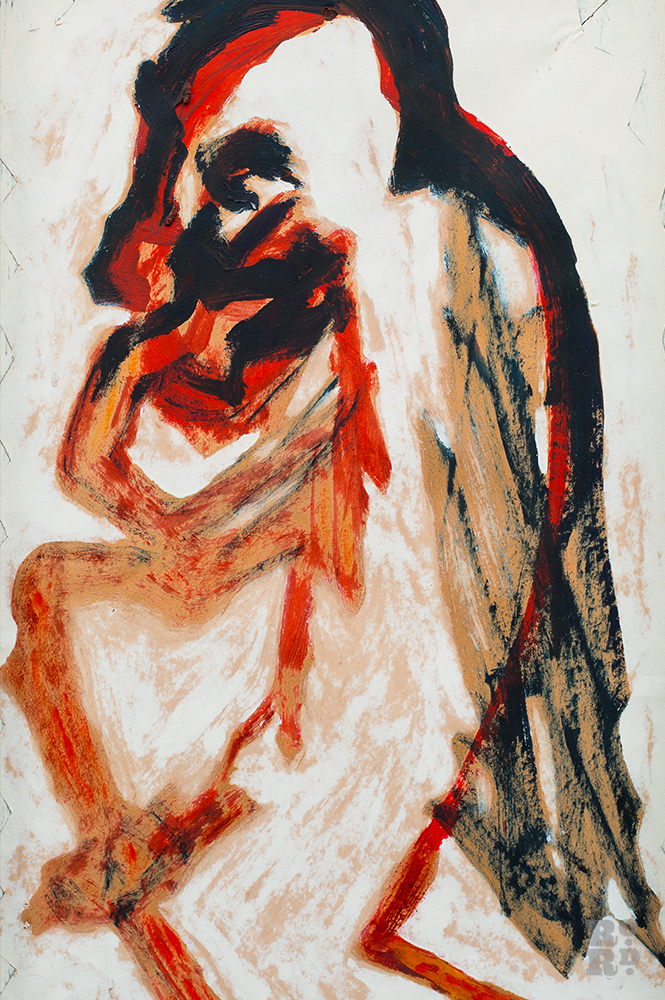
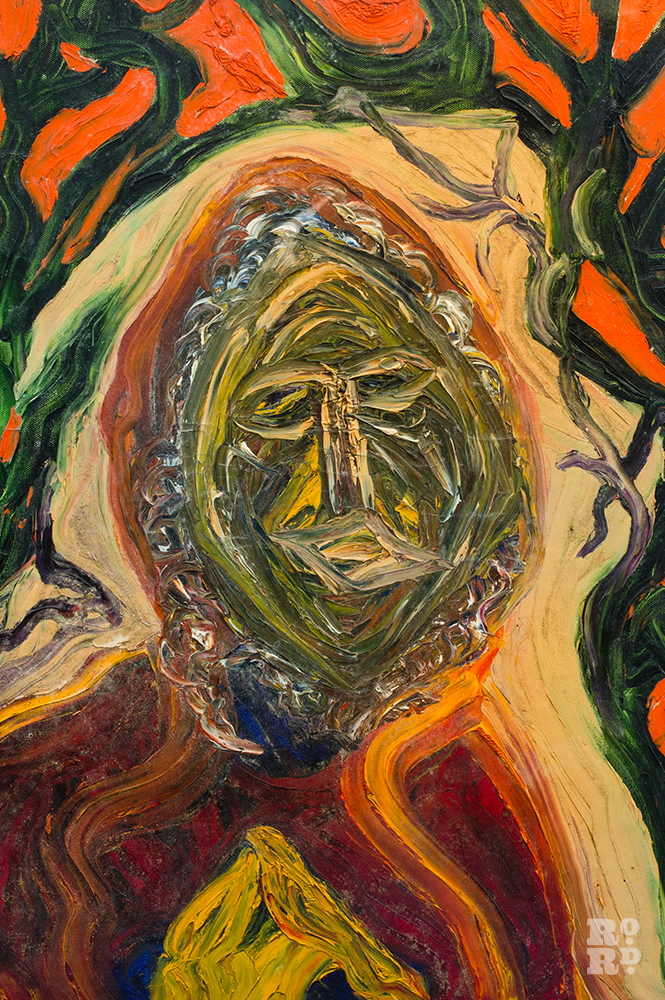
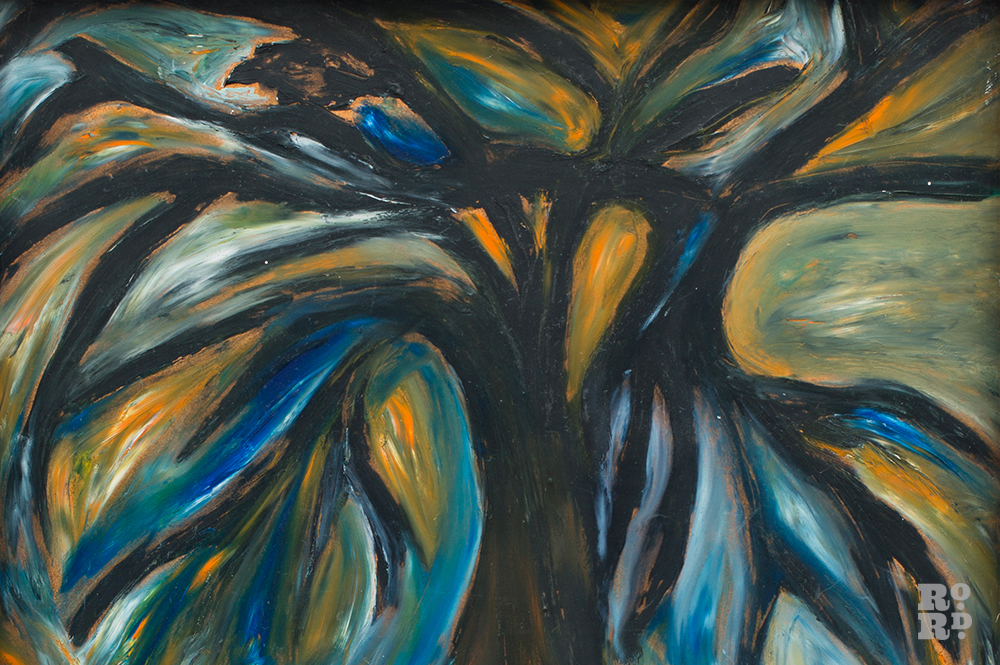
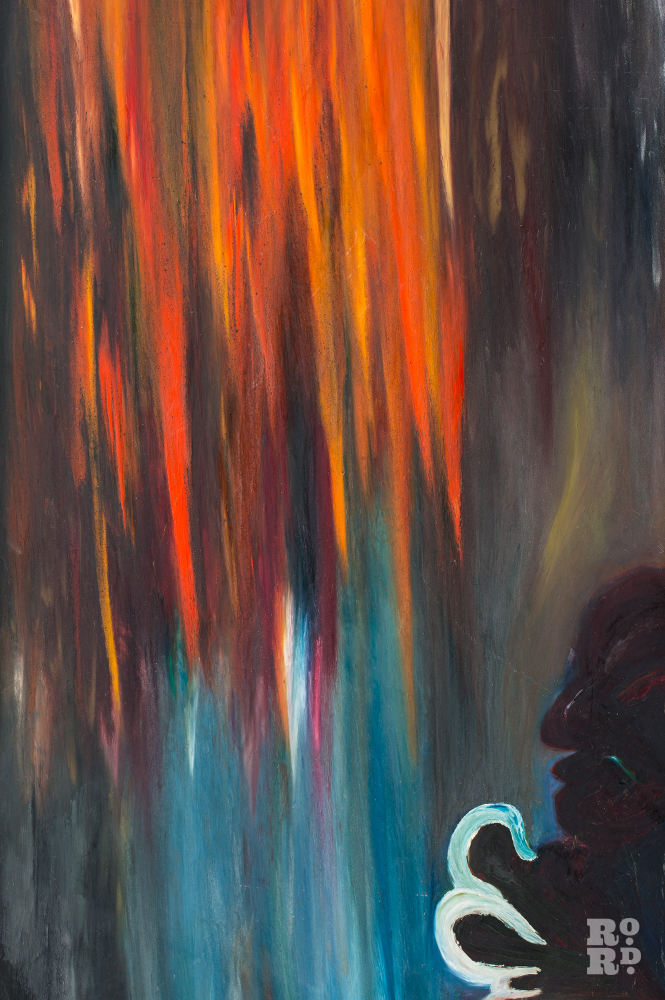
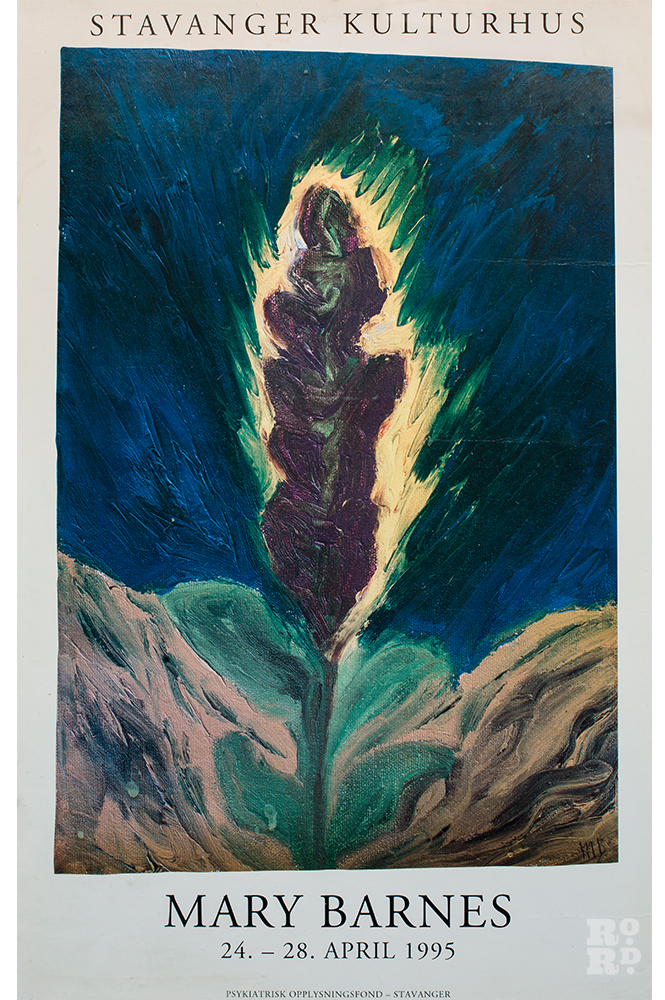
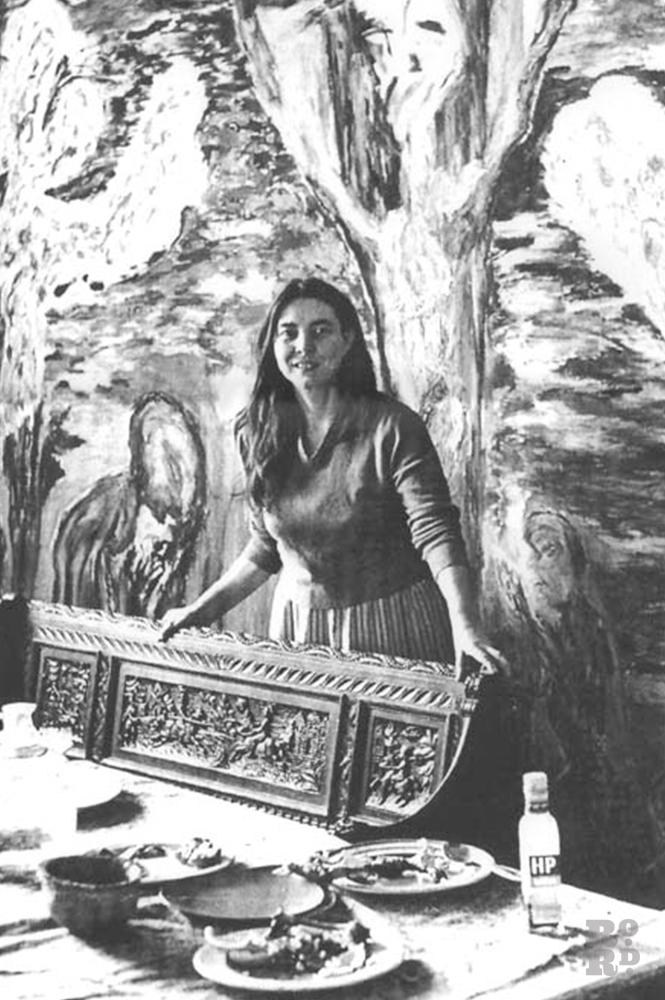
If you liked reading about this exhibition, you might enjoy reading about these Noel Gibson: Empty Streets exhibition, East London Group exhibition, David Hoffman Roman Road Cafe Art trail and more recently, Doreen Fletcher ‘s A Retrospective exhibition.

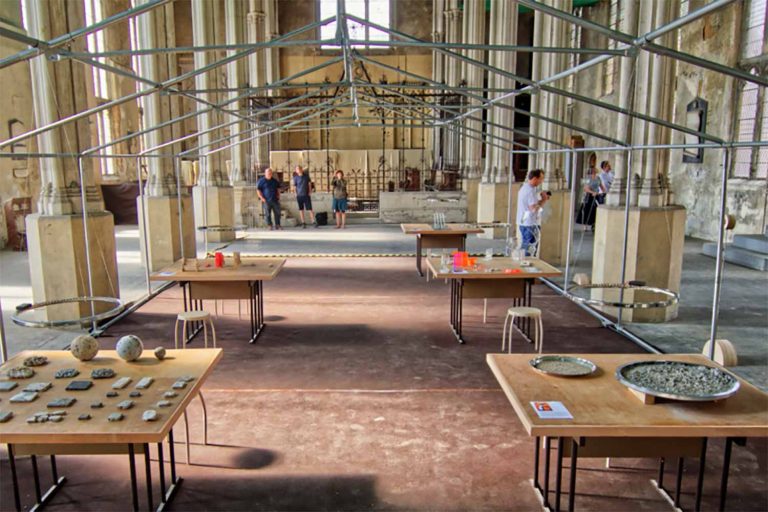
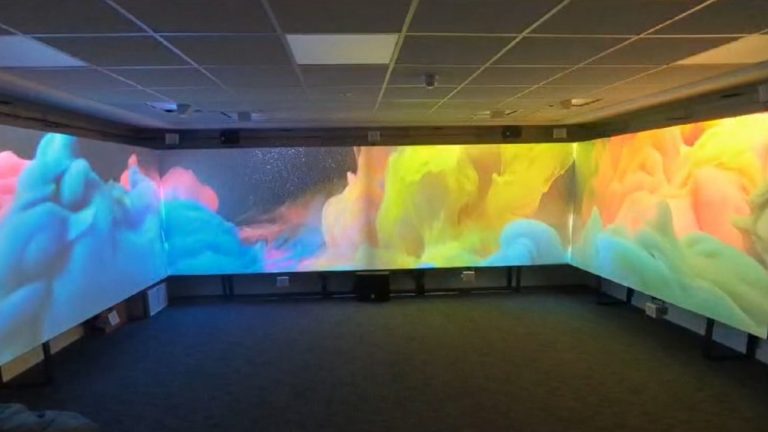
Good Morning,
We have recently cleared a flat in Exmouth where Mary Barnes lived for a number of years and discovered a cache of paintings which have been languishing there since the 90’s.
They are being offered for sale at Piers Motley Auctions on 12th November and can be viewed on our website: http://www.piersmotleyauctions.co.uk
I hope these may be of some interest to you.
Kind regards, Piers Motley